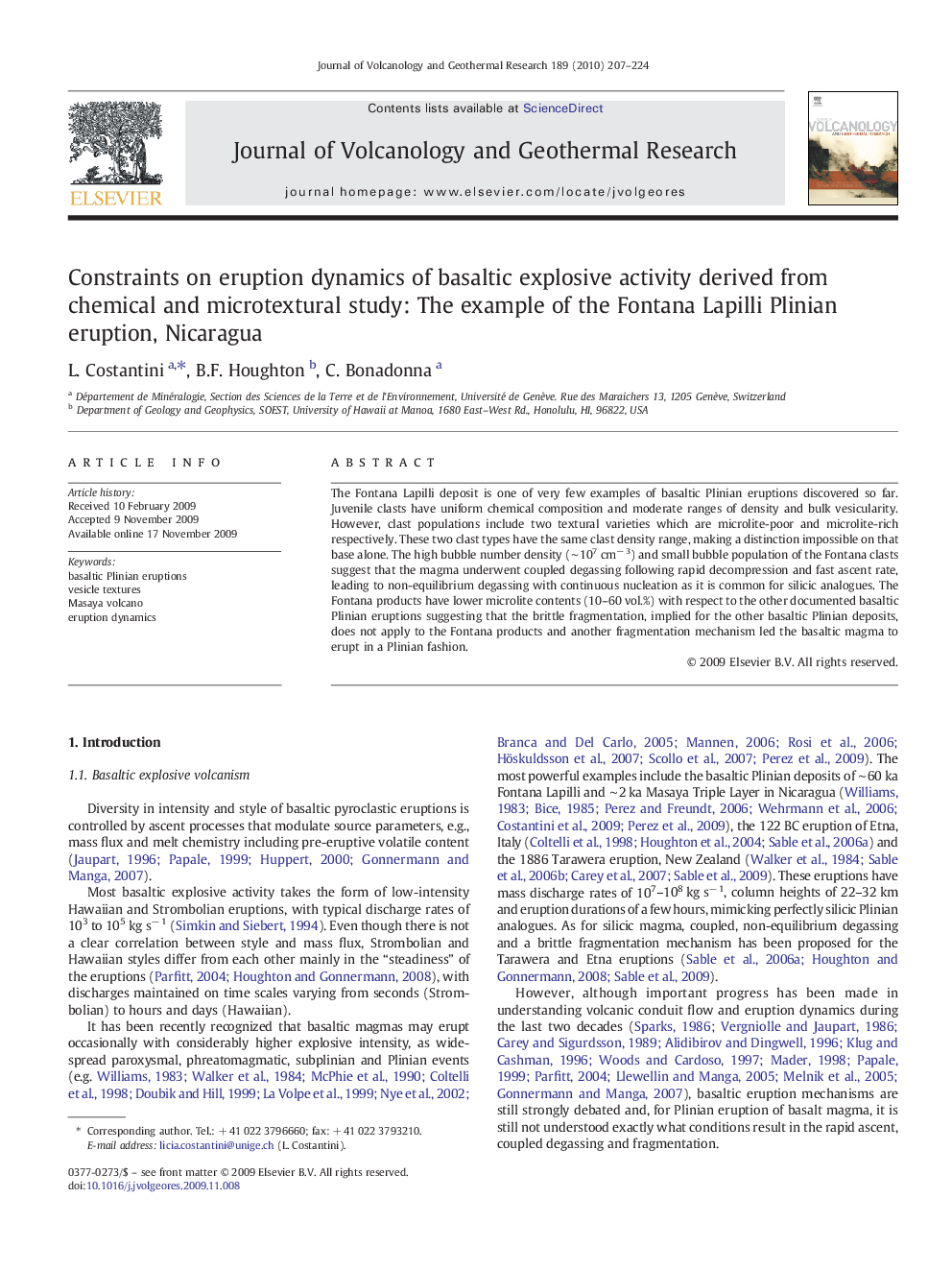| Article ID | Journal | Published Year | Pages | File Type |
|---|---|---|---|---|
| 4714068 | Journal of Volcanology and Geothermal Research | 2010 | 18 Pages |
The Fontana Lapilli deposit is one of very few examples of basaltic Plinian eruptions discovered so far. Juvenile clasts have uniform chemical composition and moderate ranges of density and bulk vesicularity. However, clast populations include two textural varieties which are microlite-poor and microlite-rich respectively. These two clast types have the same clast density range, making a distinction impossible on that base alone. The high bubble number density (∼ 107 cm− 3) and small bubble population of the Fontana clasts suggest that the magma underwent coupled degassing following rapid decompression and fast ascent rate, leading to non-equilibrium degassing with continuous nucleation as it is common for silicic analogues. The Fontana products have lower microlite contents (10–60 vol.%) with respect to the other documented basaltic Plinian eruptions suggesting that the brittle fragmentation, implied for the other basaltic Plinian deposits, does not apply to the Fontana products and another fragmentation mechanism led the basaltic magma to erupt in a Plinian fashion.
